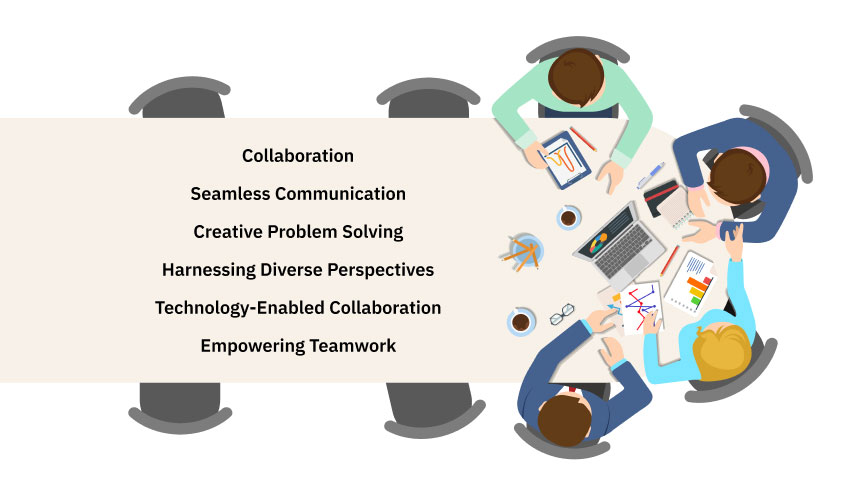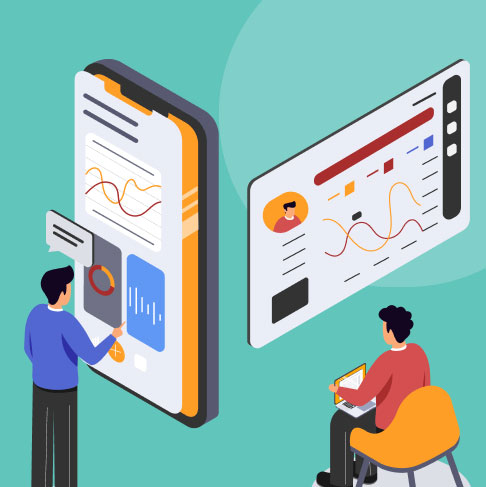Optimizing Product Development Team Structures and Collaboration
July 28, 2023 | Read Time : 3 mins
Table of Contents
Effective product development has become crucial for organizations striving to stay ahead of the competition. However, achieving successful product outcomes relies not only on innovation and creativity but also on the structure and organization of your development team.
In this blog, we will explore the best ways to structure your product development team, enabling you to maximize productivity, collaboration, and overall success.
Understanding Team Structures
To start, let’s delve into different team structures commonly used in product development:
1. Functional Team Structure
This traditional approach involves organizing your team based on specific functions such as design, development, marketing, and quality assurance.
Advantages:
- Allows team members to specialize and excel in their respective areas.
- Easier management and coordination within functional areas.
Challenges:
- Siloed communication and limited collaboration across functions.
- Slower decision-making process due to multiple layers of hierarchy.
2. Cross-Functional Team Structure
In this approach, individuals from different disciplines come together to form a team that spans functions.
Advantages:
- Enhances collaboration and knowledge sharing among team members.
- Enables faster decision-making and problem-solving.
Challenges:
- Requires effective communication and collaboration mechanisms.
- Potential conflicts due to differing perspectives and approaches.
Hybrid Team Structures
Recognizing the advantages and challenges of both functional and cross-functional team structures, many organizations opt for hybrid approaches that combine the best elements of each:
1. Product-Centric Team Structure
This structure revolves around organizing teams based on specific products or projects.
Advantages:
- Ensures a clear focus on product goals and customer needs.
- Encourages ownership and accountability within the team.
Challenges:
- Balancing resource allocation across multiple products or projects.
- Maintaining alignment with the broader organizational strategy.
2. Matrix Team Structure
A matrix structure combines functional and product-centric teams, allowing individuals to have dual reporting lines.
Advantages:
- Facilitates flexibility and resource allocation based on project needs.
- Enhances cross-functional collaboration while maintaining functional expertise.
Challenges:
- Complex reporting relationships that require clear communication channels.
- Potential conflicts arise from dual reporting and competing priorities.

Factors Influencing Team Structure
When deciding on the most suitable team structure for your product development, consider the following factors:
- Project Complexity: High-complexity projects often benefit from cross-functional or matrix structures, requiring diverse expertise and collaboration.
- Team Size: Smaller teams may lean toward functional structures, while larger teams can explore cross-functional or matrix approaches for increased collaboration and efficiency.
- Organizational Culture: Evaluate your company culture to determine which team structure aligns best with your values, communication style, and decision-making processes.
- Time Sensitivity: Projects with tight deadlines may benefit from cross-functional or product-centric teams, allowing quicker decision-making and streamlined processes.
Enhancing Collaboration and Communication
Regardless of the chosen team structure, optimizing collaboration and communication is essential for a successful product development journey. Here are some strategies to foster effective teamwork:
- Clear Goals and Roles: Establish clear project goals and individual roles within the team to provide a shared understanding of expectations and responsibilities.
- Regular Communication Channels: To enable seamless information sharing and updates, utilize various communication tools such as project management software, instant messaging platforms, and video conferences.
- Facilitate Cross-Functional Interaction: Organize regular cross-functional meetings, brainstorming sessions, and workshops to encourage collaboration and harness diverse perspectives.
- Foster a Culture of Transparency: Promote open and honest communication among team members, allowing for constructive feedback and identifying potential issues before they escalate.
- Empower Decision-Making: Encourage autonomy and empower team members to make decisions within their respective areas of expertise, fostering a sense of ownership and accountability.

Team Structures Adopted by Established Companies
When structuring product development teams, established companies often serve as valuable examples. Let’s explore some team structures that successful organizations have implemented:
- Amazon’s Two-Pizza Teams: Amazon is known for its “two-pizza teams” concept, which emphasizes small, autonomous teams that can be fed with just two pizzas. Each team is responsible for a specific product or feature and operates independently, enabling faster decision-making and streamlined communication.
- Spotify’s Squad, Tribe, Chapter, and Guild Model: Spotify has implemented a unique model based on squads, tribes, chapters, and guilds. Squads are small, cross-functional teams that work on specific features, while tribes are collections of squads working in related areas. Chapters are groups of individuals with similar skill sets across different squads, and guilds are communities of individuals sharing knowledge and best practices across the organization.
- Apple’s Functional Expertise: Apple is known for its emphasis on functional expertise within product development teams. Teams consist of design, engineering, and user experience experts working closely to ensure excellence in their respective domains. Clear roles and responsibilities within functional teams contribute to Apple’s focus on quality and innovation.
- Google’s Matrix Structure: Google utilizes a matrix structure where employees belong to functional and cross-functional project teams. This approach allows individuals to bring their functional expertise to project-based teams, fostering collaboration, knowledge sharing, and innovation. The matrix structure enables flexibility while maintaining functional excellence.
- Netflix’s Freedom and Responsibility Culture: Netflix is famous for its culture of freedom and responsibility. Product development teams at Netflix are given significant autonomy, allowing them to make decisions and drive innovation. Teams operate with minimal hierarchy and are free to experiment, adapt, and take risks, fostering a culture of ownership and continuous improvement.
These examples demonstrate no one-size-fits-all approach to structuring product development teams. Successful companies often tailor their team structures to their unique organizational culture, goals, and values. By studying these models, you can gain insights into different approaches and adapt them to suit your organization’s needs.
Adapting and Evolving
Product development is an iterative process, and your team structure should be flexible enough to adapt and evolve as needed. Regularly evaluate the effectiveness of your team structure and make adjustments to address emerging challenges and seize new opportunities. Seek feedback from team members to identify areas for improvement and foster continuous learning and growth.
Software development and Software-as-a-Service (SaaS) solutions have emerged as powerful tools to enhance collaboration and communication within product development teams. Here are some examples of platforms that can facilitate effective teamwork:
- Project Management Tools: Tools like Asana, Trello, and Jira enable teams to organize and track tasks, set deadlines, and allocate resources efficiently. They provide a centralized platform for team members to collaborate, communicate updates, and monitor project progress.
- Communication and Messaging Platforms: Platforms such as Slack and Microsoft Teams offer instant messaging, file sharing, and video conferencing capabilities. These tools allow teams to have real-time communication, facilitate quick decision-making, and foster collaboration across different functions and locations.
- Design Collaboration Tools: For teams working on design-intensive projects, tools like Figma and InVision provide a collaborative environment for designers, developers, and stakeholders to work together. These platforms allow real-time design collaboration, feedback exchange, and version control, streamlining the design-to-development workflow.
- Documentation and Knowledge-Sharing Platforms: Platforms like Confluence and Google Workspace (formerly G Suite) offer spaces for teams to create and store documentation, share knowledge, and collaborate on documents simultaneously. These tools ensure that important information is easily accessible, foster knowledge sharing, and provide a single source of truth for the team.
- Version Control Systems: Version control systems like Git and GitHub provide a structured approach to managing code repositories. They enable seamless collaboration on code, allow for code review processes, and ensure the integrity and versioning of project files.
- Virtual Whiteboarding Tools: Virtual whiteboarding tools such as Miro and Mural enable teams to brainstorm, visualize ideas, and collaborate on virtual whiteboards. These platforms mimic the experience of physical whiteboards, allowing for remote collaboration and creativity.






